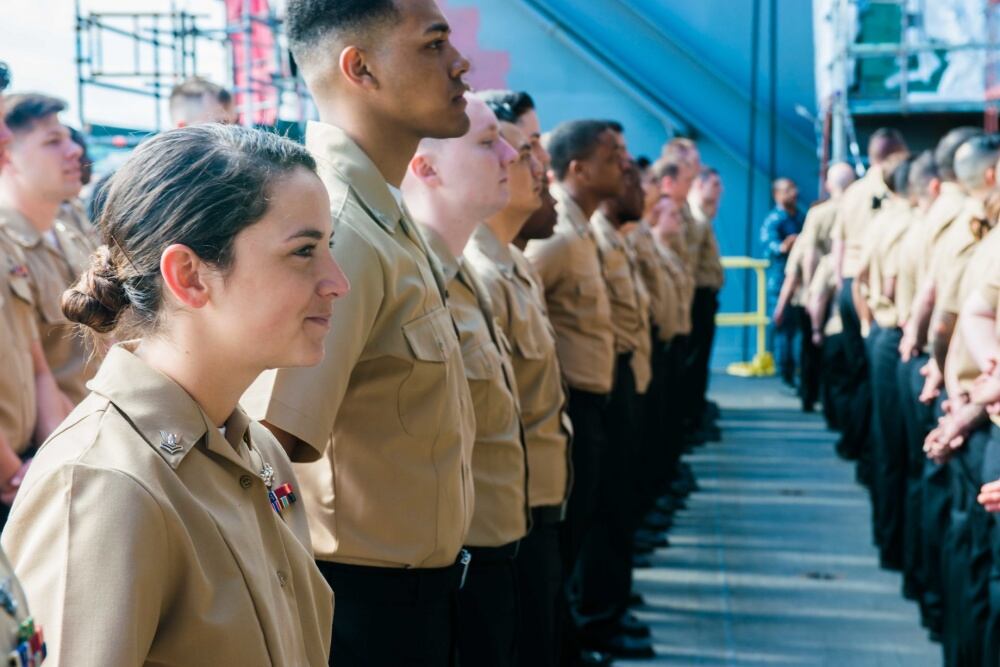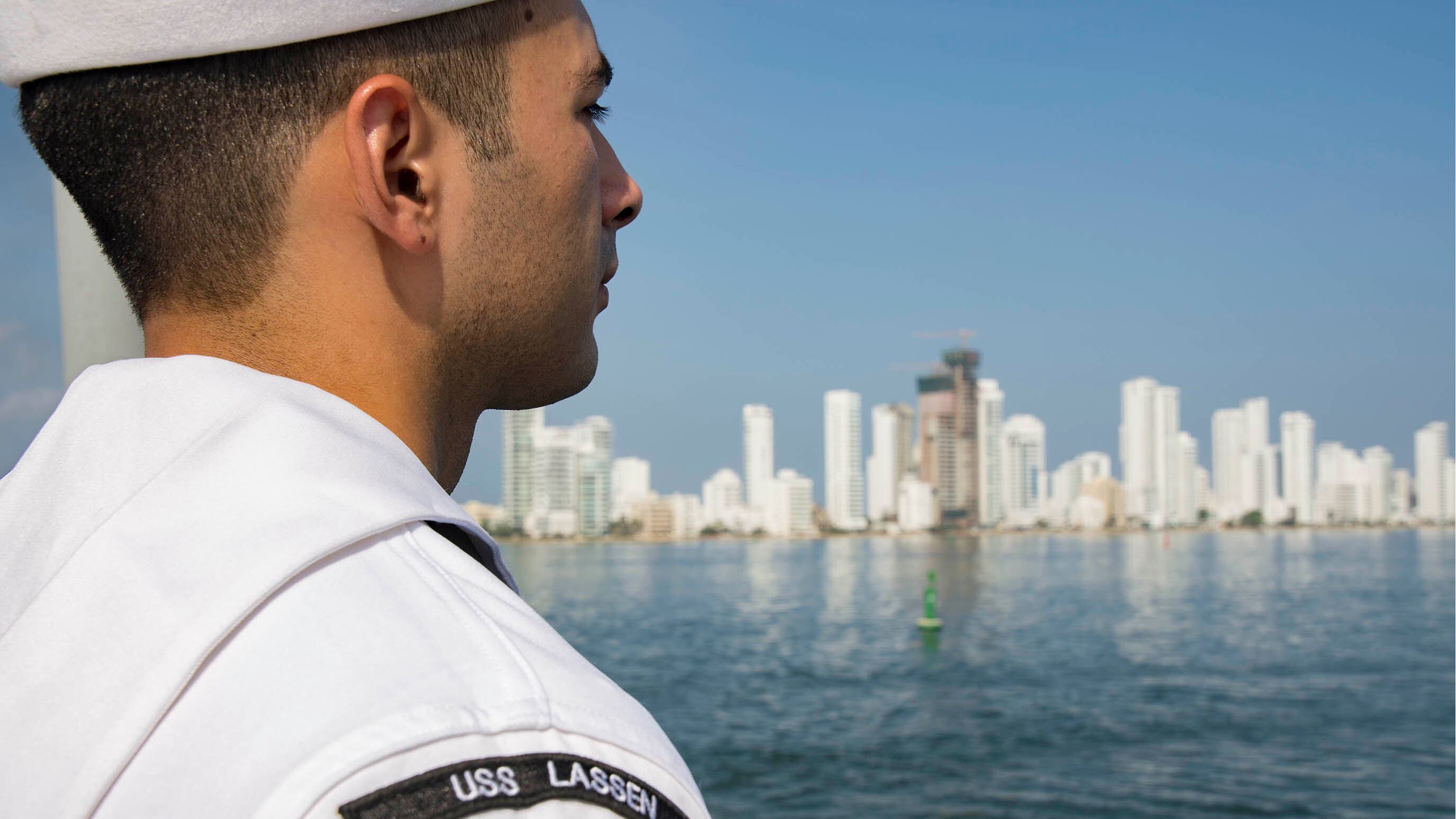Forward deployed sailors home-ported in Japan, Guam, and Rota, Spain, could be getting longer sea-duty tours in the coming years.
Chief of Naval Personnel Vice Adm. Robert P. Burke has asked for an exception to Department of Defense policies that, if approved, would allow for an increase of overseas-based sea duty tours for a maximum tour of up to four years.
Current rules only allow for a maximum of three years.
The move, officials say, will allow the Navy to keep sea duty billets manned longer, and would ultimately save money in transfer costs.
RELATED

“The purpose of this request is to increase continuity in our sea duty commands in the FDNF,” said Lt. Richard Moore, spokesman for the chief of naval personnel. “The request was submitted in November and is still being adjudicated by [DoD].”
What’s not clear, however, is how the policy would impact those currently on tours or with orders in hand.
For sailors who want to extend their tours overseas, the Overseas Tour Incentives Extension Program, or OTEIP, remains in effect and offers eligible sailors incentives for extending overseas an additional year.
In exchange for a one-year extension, those approved for the program can select to receive either additional pay of $80 per month, a 30-day R&R leave of absence during the extension, or 15-days R&R and round-trip transportation at government expense to the United States. Transportation inside the U.S. would still be at the sailor’s own expense.
As of January 2016, the Navy had over 2,500 sailors who had been approved for the extensions and incentives.
Increasing overseas sea duty tour lengths comes as the Navy is working to get U.S.- and Hawaii-based sailors to finish their sea tours.
In December, the Navy announced a push to get 61,000 first-term sailors with end-of-service dates prior to their actual rotation dates to commit to the extra time. In exchange, the Navy waived up-or-out limits and allowed sailors to bypass the Navy’s C-way re-up approval system.
Though not specifically an aim of this program, extending these tours would bring overseas time more in line with the Navy’s Sea Shore Flow, which sets sea and shore tour lengths for every Navy rating throughout the career span.
In sea intensive ratings, overseas tour lengths can be up to two years shorter than those based in the U.S. and Hawaii.
RELATED

Mark D. Faram is a former reporter for Navy Times. He was a senior writer covering personnel, cultural and historical issues. A nine-year active duty Navy veteran, Faram served from 1978 to 1987 as a Navy Diver and photographer.




